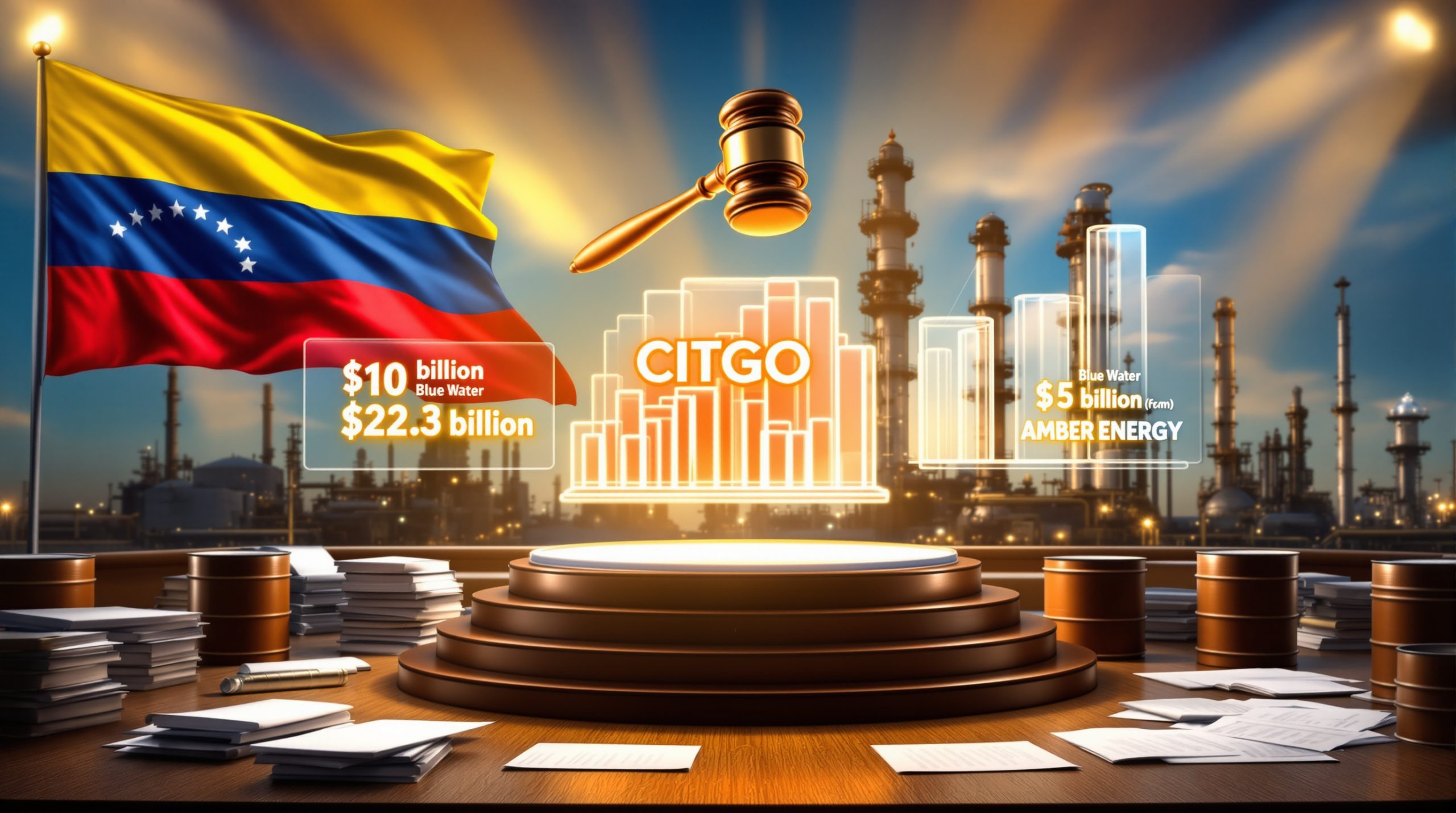How Are Australian Critical Minerals Companies Positioning in the US Market?
Australian critical minerals producers are strategically pivoting toward the United States market, drawn by America's growing demand for materials essential to clean energy and defense applications. This shift represents a significant evolution in the global critical minerals landscape, with Australian firms seeking to capitalize on both economic advantages and strategic alignments.
Key Australian Companies Targeting US Expansion
Several ASX-listed companies are leading this cross-Pacific expansion:
Australian Strategic Materials (ASM) – This $85 million firm is conducting detailed due diligence in Oklahoma and South Carolina, having identified six US states for serious consideration. ASM aims to expand beyond its existing rare earths metallization operations in Korea.
Ionic Rare Earths – Currently in advanced discussions for Tennessee operations, Ionic plans to replicate its Belfast magnet recycling technology in the US market, targeting defense and clean energy supply chains.
International Graphite – While building an advanced processing plant in Western Australia, the company is simultaneously exploring US and European options to better align with specific customer requirements.
Several other Australian critical minerals developers are following similar strategies, recognizing the potential benefits of establishing a US presence.
Primary Motivations for US Market Entry
Australian companies cite multiple driving factors behind their US expansion plans:
Access to larger customer base – The scale of the US customer base presents substantial opportunities, with rapidly developing electric vehicle, defense, and advanced manufacturing industries creating steady demand.
Proximity to end-use industries – Critical minerals firms supplying defense customers particularly benefit from locating nearby, as national security considerations and the complex steps in transforming raw materials into finished products favor shorter supply chains.
Attractive government incentives – The US federal government and many state governments are deploying significant funding to support critical minerals development, creating powerful financial incentives.
Lower energy costs – Multiple US states offer substantially lower energy costs compared to Australia, providing a crucial competitive advantage for energy-intensive processing operations.
Strategic alignment with national security – Integration into US defense industrial supply chains offers long-term stability and premium pricing opportunities for critical minerals providers.
Why Are Australian Companies Choosing US Operations Over Domestic Development?
The strategic shift toward US operations reflects both economic realities and market opportunities that Australian companies find compelling, despite Australia's own ambitions to develop its critical minerals sector.
Economic Advantages of US Operations
Cost Considerations
The cost structure differences between Australia and the US present clear advantages for processing operations:
Energy cost differential – Several US states offer dramatically lower electricity costs, a crucial advantage for energy-intensive processing operations. This single factor can determine project viability.
Competitive labor markets – The US labor market presents a more favorable cost structure for specialized technical operations compared to Australia's premium wage environment.
Reduced logistics expenses – Proximity to end-users eliminates significant transportation costs and carbon footprint concerns, especially important for defense applications where supply chain security is paramount.
Streamlined permitting – While varying by state, many US jurisdictions offer more straightforward approval processes than Australia's regulatory framework, which major miners regularly cite as an impediment to development.
Financial Incentives
The US has deployed substantial financial support mechanisms that Australian companies find attractive:
Federal funding programs – Trump's critical minerals order has provided multibillion-dollar funding to critical minerals projects, creating powerful financial incentives.
State-level incentives – Many states offer additional tax breaks, infrastructure support, and development packages to attract critical minerals operations.
Specialized loans and grants – Targeted financial instruments for critical minerals processing provide capital access advantages over traditional financing.
Public-private partnerships – Collaborative models between government agencies and private companies create additional value-capture opportunities.
Strategic Benefits of US Market Presence
Customer Proximity Advantages
Beyond pure economics, being close to customers provides strategic benefits:
Defense contractor access – Direct integration with defense industrial supply chains offers premium pricing and stable demand.
EV and battery manufacturer collaboration – Proximity enables technical collaboration and customization that distant suppliers cannot match.
Supply chain optimization – Shorter, more responsive supply chains reduce inventory requirements and improve adaptability.
Product customization capabilities – Being physically close to customers enables Australian companies to more precisely meet technical specifications and adapt to evolving needs.
National Security Considerations
The critical minerals sector increasingly operates within a national security framework:
Alignment with US strategic objectives – Processing operations in the US align with America's critical minerals security goals, creating policy support.
Defense industrial base integration – Participation in secure technology development programs provides long-term stability.
Reduced trade disruption risk – Processing within the US market eliminates potential trade barriers or restrictions that could affect imports.
Strategic partnership deepening – Cross-border operations strengthen the Australia-US alliance through economic integration.
What Specific US Locations Are Australian Companies Targeting?
Australian companies are conducting thorough site selection processes, evaluating multiple US states based on specific criteria aligned with their operational requirements.
Regional Expansion Strategies
Targeted States for Development
Several states are emerging as particularly attractive destinations:
Oklahoma – ASM is conducting detailed due diligence here, drawn by energy advantages and strategic location relative to key customers.
South Carolina – Also under serious consideration by ASM, offering manufacturing ecosystem benefits and logistics advantages.
Tennessee – Ionic Rare Earths is in advanced discussions for operations here, attracted by the state's advanced materials processing capabilities.
Other states featuring competitive energy pricing are also receiving consideration, with Australian companies conducting broad initial evaluations before narrowing to specific sites.
Site Selection Criteria
Companies apply sophisticated analysis to potential locations:
Energy costs and reliability – Both pricing and grid stability are critical considerations for processing operations.
Workforce availability – Access to skilled technical workers with relevant experience impacts operational efficiency.
Transportation infrastructure – Rail, highway, and port access affects both input and output logistics costs.
Proximity to customers – Defense contractors and other end-users often prefer suppliers within a specific geographic radius.
State incentive packages – Tax abatements, infrastructure support, and other incentives significantly impact project economics.
Case Studies of Australian Firms' US Expansion Plans
Australian Strategic Materials (ASM)
ASM's approach illustrates the comprehensive evaluation process:
Multi-state evaluation – The company identified six states for serious consideration before narrowing to Oklahoma and South Carolina for detailed due diligence.
Building on existing capabilities – ASM seeks to expand beyond its rare earths metallization plant in Korea, leveraging experience gained there.
Ecosystem integration – ASM's chief legal officer Annaliese Eames noted that beyond incentives, the company was drawn by "the commitment that they're making to grow the entire ecosystem."
Government relationship development – ASM's delegation participation in Washington meetings demonstrates the importance of policy alignment.
Ionic Rare Earths
Ionic's strategy emphasizes technology transfer and supply chain security:
Technology replication – The company plans to implement its Belfast magnet recycling technology in several US states, starting with Tennessee.
Power cost focus – Managing Director Tim Harrison highlighted "very low cost of power" as a key attraction of US locations.
Defense market targeting – Ionic recognizes that defense customers require nearby suppliers for national security reasons, driving its location strategy.
Funding access – Harrison noted that both federal and state governments are "willing to deploy immense funding" to attract critical minerals processing.
International Graphite
International Graphite demonstrates a parallel development approach:
Dual-market strategy – While building an advanced processing plant in Western Australia, the company is simultaneously exploring US and European options.
Customer-driven approach – CEO Andrew Worland emphasized the need to align "more closely with the specific requirements of its customers" as a driver for US expansion.
Technical specification focus – The company recognizes that different markets may require variations in product specifications, influencing facility design.
Geographical diversification – By developing facilities in multiple regions, International Graphite reduces concentration risk while accessing different market opportunities.
How Has China's Export Policy Influenced This Trend?
China's policy actions regarding critical minerals have significantly accelerated the movement of Australian companies toward US operations, creating both urgency and opportunity.
Impact of Chinese Export Restrictions
Market Responses to China's Policy Shifts
The April 2025 implementation of restrictions on rare earths exports by China created immediate market effects:
US policy acceleration – The restrictions "galvanized the US to supercharge its rare earths industry", creating a more supportive environment for new entrants.
Price increases – Higher Western world prices emerged following these restrictions, improving project economics for non-Chinese suppliers.
Investment attraction – The new market dynamics are "attracting investors and greasing the wheels of project finance" for critical minerals projects.
Project timeline compression – Development schedules have accelerated as companies seek to capitalize on the market opportunity and meet urgent demand.
US Policy Acceleration
China's export controls triggered a comprehensive US policy response:
Expedited funding deployment – The US mineral production order provided multibillion-dollar funding to US critical minerals projects, accelerating development timelines.
Enhanced incentive structures – New support mechanisms emerged to attract processing capacity to US soil, benefiting Australian firms with US expansion plans.
Strategic prioritization – Critical minerals rose further on the national security agenda, creating additional policy support for new projects.
Allied nation engagement – Partnerships with countries like Australia received renewed emphasis, creating opportunities for cross-border collaboration.
Competitive Dynamics in the US Market
Funding Competition Challenges
Despite substantial US government support, competition for resources remains intense:
Highly competitive funding landscape – Access to US funding is "expected to be highly competitive," creating uncertainty even for established players.
Lynas experience illustrates challenges – Australia's Lynas Rare Earths warned that its heavy rare earths processing plant in Texas may not proceed after US rivals received preferential funding.
US-based company advantages – Domestic US companies may receive preferential treatment in some funding decisions, creating additional challenges for Australian entrants.
Strategic positioning importance – Australian companies must demonstrate strategic value beyond economic benefits to secure optimal support.
What Challenges Does Australia Face in Developing Its Domestic Critical Minerals Industry?
Australia faces significant hurdles in developing its domestic critical minerals processing capacity, despite the country's abundant resources and government ambitions.
Australian Policy and Economic Hurdles
Cost Structure Disadvantages
Australia's economic environment presents several challenges:
High energy costs – Power pricing in Australia significantly exceeds competitive US states, placing energy-intensive processing at a disadvantage.
Premium labor costs – Australia's wage structure creates higher operational expenses compared to many competing jurisdictions.
Cumbersome approvals process – Major miners regularly cite Australia's complex regulatory framework as impeding growth and diminishing international competitiveness.
Geographic isolation – Distance from major manufacturing centers increases logistics costs and complicates customer relationships.
Limited Domestic Manufacturing Base
Australia's industrial structure complicates downstream development:
Automotive industry loss impact – PwC Australia chief economist Amy Lomas noted that advanced manufacturing development was "clipped by the closure of Australia's car industry in the 2010s."
Customer base limitations – Ionic's Harrison highlighted a fundamental challenge: "Where do we sell our materials? Where is the metals, alloys, magnet capacity being built? It's not being built in Australia."
Value chain gaps – The absence of intermediate processing and manufacturing creates barriers to capturing value beyond extraction.
Scale constraints – Australia's domestic market lacks the scale to support specialized processing facilities targeting niche applications.
Australian Government Response Initiatives
Policy Support Mechanisms
Australia is implementing measures to address these challenges:
Production tax credit – In February, Australia passed a A$17 billion production tax credit that will provide a 10% offset for critical minerals processors from 2027.
International partnerships – Australia is building critical minerals partnerships with allies including Japan, India, and Britain to deepen its customer base.
Strategic resource planning – Australia's critical minerals reserve aims to coordinate development across the critical minerals value chain.
Research and innovation support – Technical development programs seek to improve processing economics and create intellectual property advantages.
Long-Term Industry Development Strategy
Australia's approach focuses on foundation-building:
Midstream processing foundations – PwC's Lomas noted that international partnerships "start to set the foundations for Australia to be able to run a lot harder typically for midstream processing."
Targeted downstream opportunities – Selective downstream processing development focuses on areas of comparative advantage.
Customer relationship cultivation – Strategic partnerships with key consuming nations aim to secure market access.
Complementary capabilities development – Australia seeks to build specialized capabilities that complement rather than directly compete with US operations.
What Does This Mean for Australia-US Critical Minerals Cooperation?
The expansion of Australian companies into the US market creates both opportunities and complexities for bilateral cooperation in the critical minerals sector.
Bilateral Strategic Alignment
Complementary Capabilities
Australia and the US bring different strengths to critical minerals development:
Australian extraction expertise – World-leading mining capabilities provide a foundation for resource development and initial processing.
US manufacturing integration – Advanced manufacturing ecosystems in the US enable higher-value transformation of processed materials.
Shared security concerns – Both nations prioritize reducing dependence on Chinese critical minerals supplies.
Compatible business environments – Similar legal systems and business cultures facilitate cross-border operations.
Collaborative Opportunities
This alignment creates specific cooperation avenues:
Joint technology initiatives – Shared research and development can address common processing challenges.
Investment reciprocity – Cross-border investments strengthen both economies and supply chain resilience.
Standards harmonization – Aligned product specifications and regulatory approaches reduce trade barriers.
Workforce development – Exchange programs and shared training can address specialized skills shortages.
Economic and Security Implications
Trade and Investment Flows
The trend affects economic relationships:
Australian capital deployment – Increased investment in US processing facilities represents a significant capital flow.
Intermediate product trade – Exchange of materials at various processing stages creates complex trade patterns.
Technology transfer acceleration – Cross-border operations facilitate faster knowledge sharing and implementation.
Service sector opportunities – Technical, engineering, and financial services benefit from expanded activity.
Geopolitical Considerations
Strategic factors increasingly influence business decisions:
Alliance reinforcement – Economic integration strengthens the broader security relationship.
Supply chain realignment – Both countries benefit from reduced dependence on potentially unreliable suppliers.
Technology security enhancement – Shared operations improve protection of sensitive processing technologies.
Resource diplomacy leverage – Coordinated approaches strengthen negotiating positions with other market participants.
What Future Developments Can We Expect in This Sector?
The Australian-US critical minerals relationship continues to evolve, with several key trends likely to shape future development.
Industry Evolution Forecast
Near-Term Developments (1-2 Years)
The immediate future will focus on establishing foundations:
Site selection finalization – Australian companies will complete due diligence and announce specific US facility locations.
Funding competition resolution – The competitive landscape for US government support will clarify, determining project viability for some participants.
Initial production establishment – Early movers will begin limited operations, focusing on proving commercial viability.
Policy framework refinement – Both governments will adjust support mechanisms based on initial implementation experience.
Medium-Term Outlook (3-5 Years)
Operational integration will characterize this period:
Supply chain maturation – Interconnected operations across borders will create more efficient material flows.
Technology optimization – Processing innovations will improve economics and expand product capabilities.
Recycling infrastructure development – Secondary material recovery will complement primary production.
Market consolidation pressures – Competitive dynamics may drive mergers and strategic partnerships among smaller players.
Market Transformation Implications
Shifting Global Supply Chain Dynamics
Broader industry patterns will emerge:
Chinese dominance moderation – While China will remain a major player, its market share will gradually decline in sensitive applications.
Bifurcated pricing structures – "Friendly" critical minerals sources may command premium prices for secure applications.
Parallel supply chains – Separate material flows for consumer versus strategic applications may develop.
Increased supply chain transparency – Traceability requirements will drive more rigorous documentation of material origins.
Investment Considerations
Capital allocation strategies must adapt:
Government relationship importance – Political considerations will increasingly influence project economics and viability.
Strategic premium valuation – Supply security benefits may justify investments that appear suboptimal on purely economic grounds.
Geographic diversification balancing – Companies will seek optimal positioning across multiple jurisdictions to manage risks.
ESG performance differentiation – Environmental and social factors will create competitive advantages for responsible producers.
How Are Critical Minerals Projects Being Financed?
The financing landscape for critical minerals projects is evolving rapidly, with both government and private funding sources playing important roles.
Funding Mechanisms and Challenges
Government Support Programs
Public sector financial support takes various forms:
US federal funding – The Trump administration has provided multibillion-dollar support to critical minerals projects, though access is highly competitive.
State-level incentives – Individual US states offer additional support packages to attract development.
Australian production tax credit – Australia's A$17 billion program will provide a 10% offset for processors from 2027.
International partnership funding – Bilateral arrangements with countries like Japan, India, and Britain create additional financial opportunities.
Private Investment Trends
Commercial capital sources are also evolving:
Strategic investor interest – End-users seeking supply security are making direct investments in upstream projects.
Venture capital attention – Early-stage processing technologies are attracting specialized investment funds.
Creative financial structures – Hybrid funding approaches combining equity, debt, and offtake arrangements address unique project needs.
ESG-focused investment – Funds with sustainability mandates are increasingly targeting critical minerals projects with strong environmental credentials and energy transition support.
Case Study: Project Finance Comparisons
US Project Financing Advantages
Projects on US soil benefit from specific advantages:
Government-backed loans – Federal loan guarantee programs reduce financing costs and improve capital access.
Defense contract integration – Inclusion in defense supply chains provides revenue certainty that improves bankability.
Infrastructure support – State and local governments often provide site preparation and connection assistance.
Accelerated permitting – Streamlined approval processes in some jurisdictions reduce time-to-market and financing risk.
Australian Project Financing Challenges
Australian projects face several financing hurdles:
Sovereign risk concerns – Recent resource taxation changes have heightened investor wariness about policy stability.
Limited government financial instruments – Australia offers fewer direct financing tools compared to the US.
Smaller domestic investor pool – Australia's capital markets have less depth for specialized resource projects.
International competition for funds – Projects must compete globally for capital in a highly competitive environment through various ASX capital raising strategies.
FAQ: Australian Critical Minerals Companies in the US Market
What critical minerals are Australian companies primarily focused on in their US expansion?
Australian companies are targeting materials essential for clean energy and defense applications, including rare earth elements for permanent magnets used in electric vehicles, wind turbines, and defense systems. Graphite for battery applications and other specialized minerals for high-technology applications also feature prominently in expansion plans.
How does current US policy affect Australian critical minerals companies?
The Trump administration has prioritized critical minerals development through multibillion-dollar funding initiatives, creating significant opportunities for Australian companies with US operations. These policies aim to reduce dependence on Chinese supplies while building domestic processing capacity, often with allied nation participation.
Are Australian companies abandoning domestic development in favor of US expansion?
Rather than abandonment, most companies are pursuing parallel strategies. They maintain Australian extraction and initial processing while developing US facilities for advanced processing and manufacturing integration. This approach maximizes value capture across different segments of the supply chain while managing geographic concentration risk.
What timeline can we expect for Australian companies to establish US operations?
Most companies are currently in site selection and preliminary engineering phases. ASM is conducting detailed due diligence in Oklahoma and South Carolina, while Ionic Rare Earths is in advanced discussions for Tennessee operations. Production facilities will likely begin operations within 2-3 years, assuming favorable funding outcomes.
How competitive is the US funding landscape for Australian companies?
Access to US government funding is "expected to be highly competitive" according to industry sources. Lynas Rare Earths' experience illustrates the challenges, as the company has warned that its heavy rare earths processing plant in Texas may not proceed after the Trump administration provided multibillion-dollar funding to US competitors.
Ready to Capitalise on the Next Major Mineral Discovery?
Discover why Australian critical minerals companies are strategically positioning themselves in the US market with Discovery Alert's proprietary Discovery IQ model that delivers real-time notifications on significant ASX mineral discoveries. Visit our discoveries page to understand how historic mineral discoveries can generate substantial returns for informed investors.




